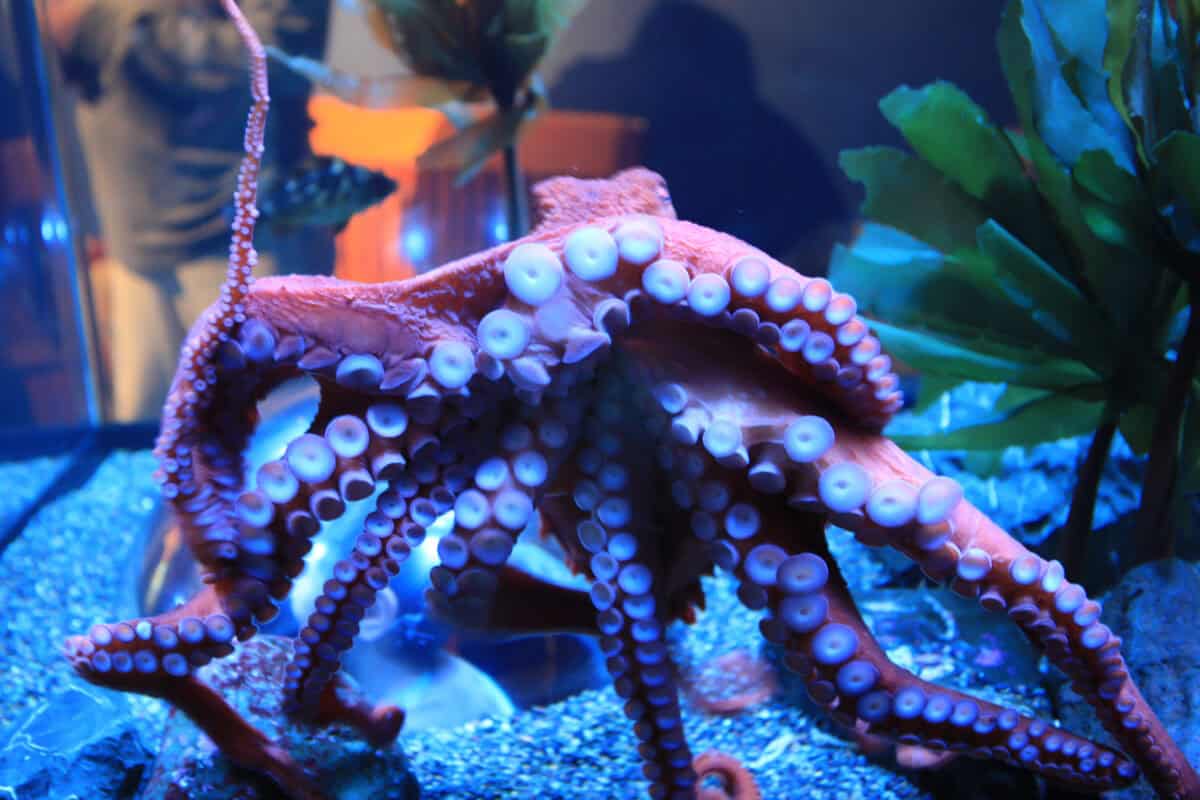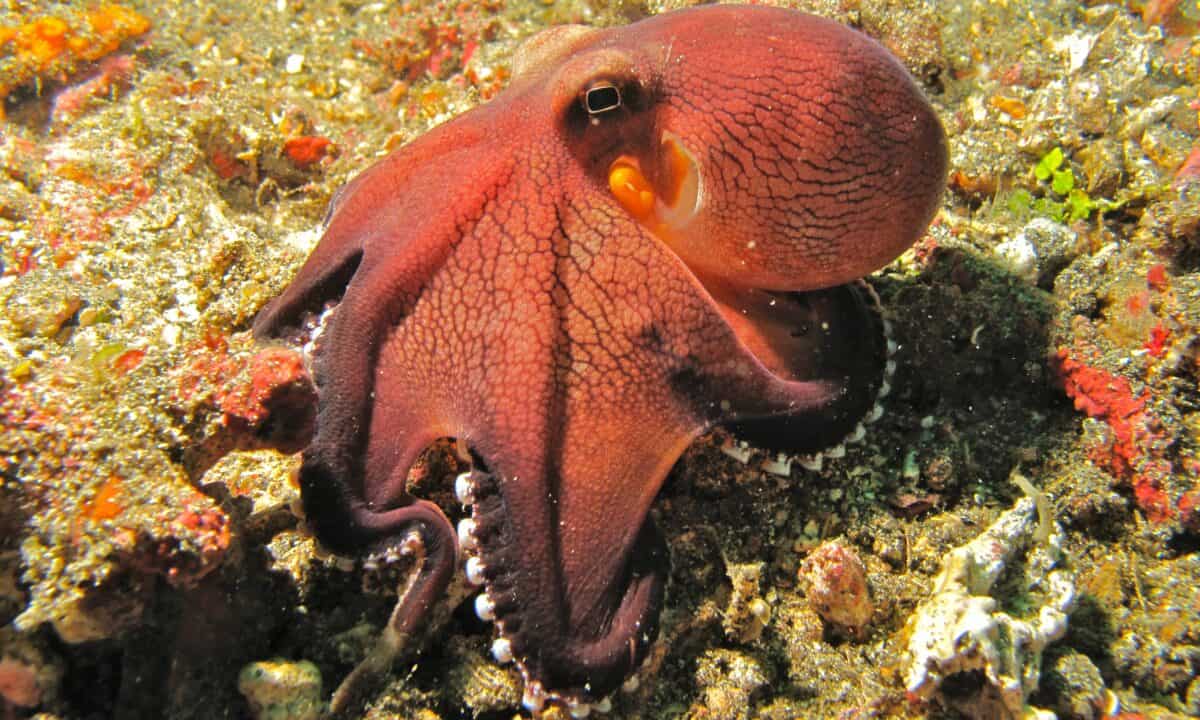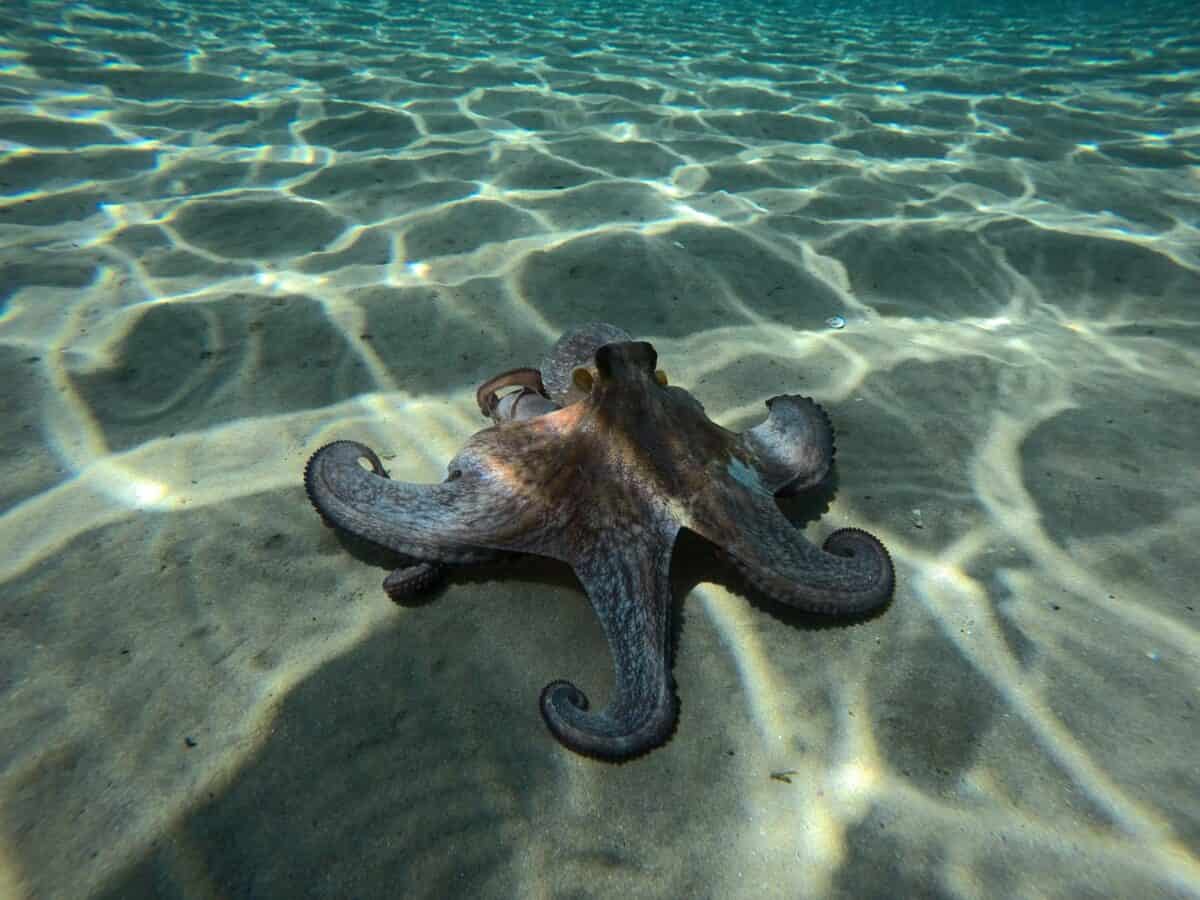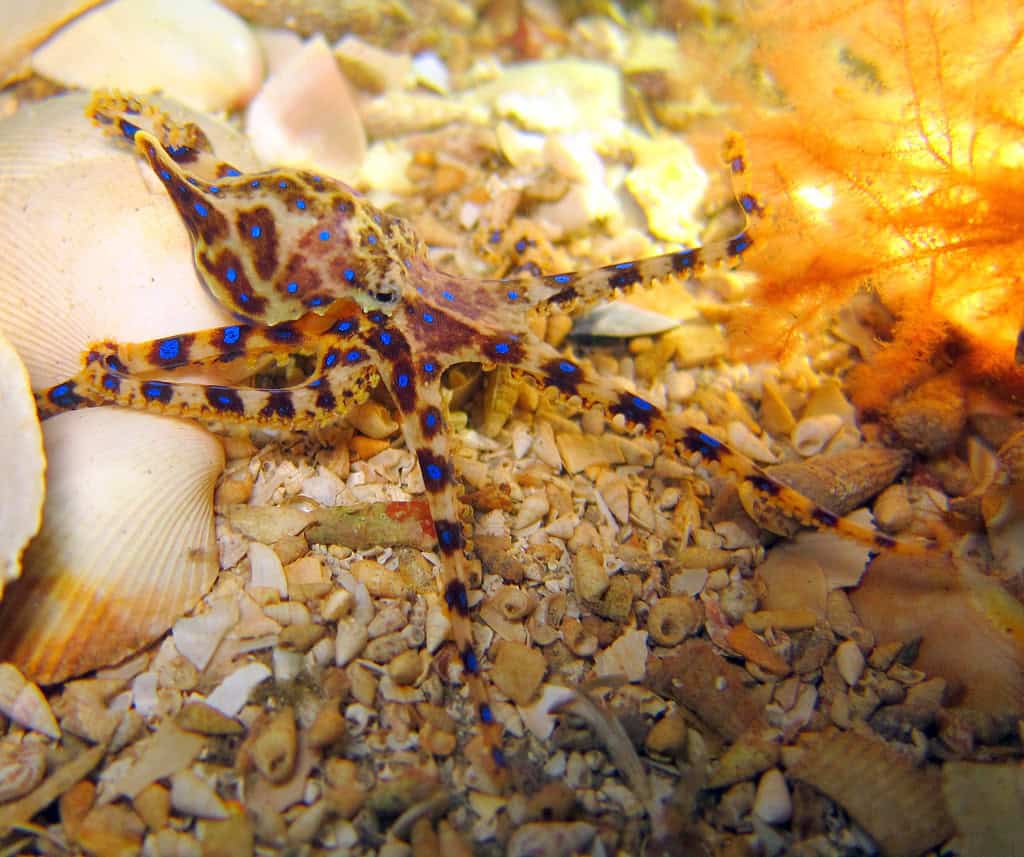In the mysterious depths of our oceans, octopuses lead fascinating lives filled with complexity and intelligence that rivals many vertebrates. Yet perhaps the most puzzling aspect of octopus biology is their peculiar reproductive strategy. Many octopus species, particularly those in the deep sea, engage in what scientists call “terminal reproduction” – they reproduce just once in their lifetime and then promptly die. This dramatic life cycle, where reproduction and death are inextricably linked, has fascinated marine biologists and evolutionary scientists for decades. For these remarkable cephalopods, reproduction becomes their final act in a relatively short but extraordinary life.
The Terminal Reproduction Phenomenon

Terminal reproduction, or semelparity, is the biological phenomenon where an organism reproduces once before death. This reproductive strategy stands in stark contrast to iteroparity, where organisms reproduce multiple times throughout their lives. In octopuses, this process is particularly dramatic and definitive. After mating, female octopuses dedicate themselves entirely to protecting their eggs, often at the expense of hunting or self-defense. Males, meanwhile, may wander aimlessly after mating, becoming easy targets for predators. The biological mechanisms behind this reproductive death are intricate and involve dramatic hormonal changes that essentially program the octopus for self-destruction after ensuring their genetic legacy continues to the next generation.
The Male Octopus’s Final Journey

For male octopuses, the reproductive journey ends quickly after mating. Male deep-sea octopuses like the giant Pacific octopus (Enteroctopus dofleini) experience significant physiological changes following mating. Their bodies begin to deteriorate as the optic glands (similar to the pituitary gland in vertebrates) release hormones that trigger senescence—a rapid aging process.
These hormones flood the male’s system, causing muscle atrophy, immune system failure, and eventually death. Some males die within weeks of mating, having fulfilled their evolutionary purpose of passing on their genes. In species like the larger Pacific striped octopus, males may mate with multiple females before succumbing to this programmed death, but the outcome remains the same: one reproductive season followed by inevitable mortality.
The Maternal Death Sentence

Female octopuses face an even more dramatic post-reproductive fate. After mating, a female octopus finds a suitable den where she lays thousands—sometimes tens or hundreds of thousands—of eggs. What follows is one of the most remarkable examples of maternal dedication in the animal kingdom. The female octopus guards her eggs continuously, cleaning them with her suckers and blowing fresh water over them to ensure proper oxygenation. During this brooding period, which can last from a few weeks to several months depending on the species, the female stops eating entirely. This maternal devotion is absolute; she will not leave her eggs even to find food. As she slowly starves, her body begins to break down its own tissues for energy, while hormonal changes accelerate her physical decline.
The Evolutionary Advantage

While terminal reproduction may seem counterintuitive—why would natural selection favor a life history that ends after just one reproductive event?—evolutionary biologists have identified several potential advantages. By investing all available energy into a single reproductive event, octopuses can produce more eggs and provide better maternal care than if they divided their resources across multiple breeding attempts.
This reproductive strategy may also reduce competition between generations, as parents don’t survive to compete with their offspring for resources. In the unpredictable and often hostile deep-sea environment, putting all reproductive efforts into one massive clutch of eggs may represent the optimal strategy for ensuring that at least some offspring survive to adulthood. Studies suggest that this reproductive strategy evolved in response to the high-pressure, resource-limited environments that many octopus species inhabit.
The Role of the Optic Gland

At the center of the octopus’s programmed death is the optic gland, a small structure located between the eyes that functions somewhat like the pituitary gland in vertebrates. Groundbreaking research by neurobiologist Z. Yan Wang at the University of Washington has revealed that this gland serves as the command center for the complex hormonal cascade that leads to reproductive death. The optic gland secretes steroid hormones after mating that trigger multiple physiological changes throughout the octopus’s body. These changes include increased production of stress hormones, activation of self-destructive cellular processes, and changes in metabolism that prevent the octopus from maintaining its body. Earlier experiments conducted in the 1970s showed that removing this gland could extend an octopus’s lifespan significantly, allowing females to eat again after laying eggs and potentially even reproduce a second time—a possibility that doesn’t occur in nature.
The Maternal Sacrifice

The maternal behavior of female octopuses represents one of the most extreme examples of parental investment in the animal kingdom. During the brooding period, which can last up to 10 months in some deep-sea species, the female’s dedication is absolute. She meticulously cleans each egg, removing algae, bacteria, and other potential contaminants that could harm her developing offspring. She also continuously fans the eggs with gentle currents of water, ensuring they receive adequate oxygen.
This constant care comes at an enormous physical cost. Throughout this period, she does not hunt or eat, subsisting solely on her body’s reserves. Over time, her skin loses its color and elasticity, her eyes cloud over, and her muscles atrophy. By the time her eggs hatch, she is often little more than a ghost of her former self, with barely enough energy remaining to blow the hatchlings away from the den with her final breaths before dying.
Chemical Triggers of Death

Recent research into the biochemical mechanisms behind octopus senescence has revealed a complex interplay of hormones and neurotransmitters. After reproduction, cholesterol levels in the octopus’s bloodstream rise dramatically, converting to steroid hormones that drive the programmed death. These hormones trigger changes in multiple body systems simultaneously. The immune system begins to fail, making the octopus vulnerable to infections it would normally fight off easily.
Muscle tissue starts to degrade, explaining the weakness and lethargy observed in post-reproductive octopuses. The digestive system shuts down, preventing the animal from processing food even if it were to attempt feeding. Particularly in females, the optic gland releases hormones that stimulate the production of maternal care behaviors while simultaneously initiating the breakdown of bodily tissues to provide energy during the long brooding period. This remarkable system ensures that the octopus’s final days are spent protecting its genetic legacy rather than preserving its own life.
Exceptions to the Rule

While terminal reproduction is common among octopuses, not all species follow this pattern exactly. Research has uncovered interesting variations in reproductive strategies among different octopus species. The larger Pacific striped octopus (LPSO), for instance, exhibits behaviors that break several octopus norms. Unlike most octopus species where females die after hatching their first clutch of eggs, female LPSOs can lay multiple clutches of eggs over their lifetime. They continue to eat during brooding and can survive after their eggs hatch to reproduce again.
Similarly, some deep-sea octopuses have evolved extremely long brooding periods. In 2007, researchers discovered a female Graneledone boreopacifica at a depth of 1,397 meters who brooded her eggs for an astonishing 53 months—the longest brooding period known for any animal. Despite these exceptions, the general pattern of significant parental sacrifice and post-reproductive death remains consistent across most octopus species, highlighting the evolutionary importance of this reproductive strategy.
The Physiological Process of Senescence

The deterioration process that octopuses undergo after reproduction is reminiscent of accelerated aging or programmed cell death in other organisms. After mating and egg-laying, both male and female octopuses enter a state of senescence characterized by multiple physiological changes. Their skin loses pigmentation and becomes thin and prone to damage. Their muscles weaken progressively, making movement increasingly difficult. Their digestive systems shut down, and they stop eating entirely. Their immune systems collapse, making them vulnerable to parasites and infections.
Even their behavior changes dramatically—males may swim aimlessly in open water, seemingly oblivious to predators, while females focus exclusively on egg care at the expense of self-preservation. Research indicates that this programmed death involves multiple genetic pathways similar to those involved in aging in other animals, but compressed into an extremely short timeframe. The process appears to be irreversible once initiated, suggesting that reproduction fundamentally alters the octopus’s physiology in ways that make continued survival impossible.
Parental Investment Theory

Terminal reproduction in octopuses aligns with parental investment theory, which predicts that organisms will evolve strategies that optimize the survival of their offspring, sometimes at significant cost to the parents. For octopuses, which produce thousands of eggs but offer no parental care beyond the female’s brooding period, maximizing the number and quality of eggs represents the best reproductive strategy. By concentrating all reproductive effort into a single massive breeding event, octopuses can produce more eggs than would be possible across multiple reproductive cycles.
The female’s extreme investment in protecting her eggs ensures that a higher percentage will successfully hatch. From an evolutionary perspective, this strategy makes sense in environments where adult survival rates are relatively low and unpredictable. By “putting all their eggs in one basket” (quite literally), octopuses maximize their genetic contribution to the next generation. This reproductive strategy has proven remarkably successful, as evidenced by the worldwide distribution and ecological success of octopuses across various marine habitats.
Life History Trade-offs

The dramatic reproductive strategy of octopuses represents a classic example of life history trade-offs in evolutionary biology. All organisms face constraints in how they allocate limited resources between growth, maintenance, and reproduction. Octopuses have evolved to prioritize rapid growth during their early life stages, followed by massive reproductive investment at the expense of continued survival. Most octopus species grow remarkably quickly, sometimes increasing their weight by 5% per day during peak growth periods.
This rapid development allows them to reach reproductive age quickly—often within 1-2 years, depending on the species. By compressing their entire life cycle into such a short period, octopuses can respond rapidly to favorable environmental conditions. When conditions are good, a female can produce an extraordinary number of offspring in her single reproductive event. This boom-and-bust life cycle strategy has proved highly adaptive in marine environments where conditions can change rapidly and unpredictably. The trade-off is clear: octopuses sacrifice longevity for reproductive output, investing everything in their single chance to pass on their genes.
The Scientific Mystery

Despite decades of research, many aspects of terminal reproduction in octopuses remain mysterious to scientists. Researchers continue to investigate the precise genetic and molecular mechanisms that trigger the death spiral after reproduction. One intriguing question concerns whether this programmed death is entirely hardwired or if environmental factors might influence its timing and progression. Some scientists speculate that there could be circumstances under which the usual post-reproductive death might be delayed or modified.
There’s also continued debate about how this unusual reproductive strategy evolved in the first place. Did it arise from ancestral mollusks that had similar tendencies, or did it evolve independently in cephalopods? The evolutionary relationships between octopuses with different reproductive strategies provide valuable clues, but definitive answers remain elusive. Ongoing genomic studies comparing the genetic programs activated during reproduction in different octopus species may eventually shed light on these fascinating questions, potentially revealing evolutionary insights that extend beyond octopuses to broader principles of life history evolution.
Conclusion: The Ultimate Sacrifice

The terminal reproductive strategy of octopuses represents one of the most dramatic examples of parental sacrifice in the animal kingdom. These remarkable cephalopods, already extraordinary for their intelligence and adaptive capabilities, end their brief lives with a reproductive finale that ensures the maximum possible chance for their offspring’s survival. This evolutionary strategy, while seemingly harsh, has proven remarkably successful, allowing octopuses to thrive in diverse marine environments worldwide for millions of years. As scientists continue to unravel the physiological, genetic, and evolutionary underpinnings of this phenomenon, they not only gain insights into octopus biology but also deepen our understanding of the fundamental trade-offs that shape all life on Earth. In the end, the octopus’s final sacrifice stands as a powerful reminder of the diverse and sometimes unexpected paths that evolution can take in the endless quest to pass genes to the next generation.
- The Science Behind the Panda’s Distinct Black and White Fur - August 15, 2025
- The Fascinating World of Bioluminescence in Animals - August 15, 2025
- Why Florida Might Be Uninhabitable in 50 Years - August 15, 2025

